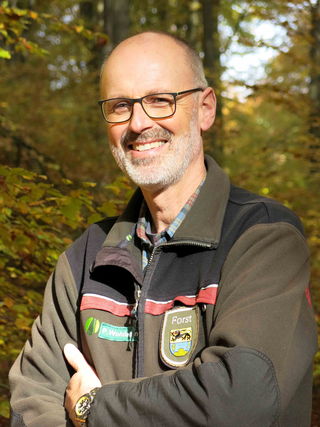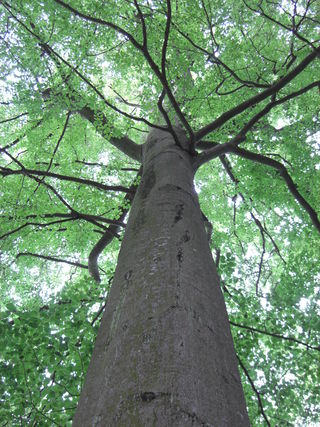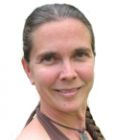Environment
Interview: The Hidden Life of Trees
Peter Wohlleben on trees, climate change, and our relationship to life on Earth.
Posted September 19, 2016 Reviewed by Kaja Perina
“If you read this book, I believe that forests will become magical places for you, too.” —Tim Flannery
Meet Peter Wohlleben, author of the international best-seller The Hidden Life of Trees. Released last year in Germany, it quickly appealed to audiences and Wohlleben became an overnight spokesperson for a powerful new way to understand forests, and life as we know it. An emerging new paradigm of partnership that is about family and interconnection, bonds and support, nourishment and communication. Profiled in January of this year by The New York Times, his book–at that time–had sold 320,000 copies and been optioned for translation in 9 languages.
Mothering Nature is very pleased to share this exclusive interview with Wohlleben in conjunction with last week's release of the English translation; out on September 13 via Canada's Greystone Books.

Thank you so much for speaking with us Mr. Wohlleben! And thank you for speaking for the trees.
How did you get interested in trees? Is there a story you can pinpoint, or was it more of a long process of discovery?
I studied forestry because of my deep love of nature. But forestry means one has to work with tree plantations, with insecticides and clearcuts. I felt unhappy with that and changed methods by convincing the forest owner, a little town in the Eifel-mountains of Germany (470 inhabitants) to work in more environmentally friendly manner. I learned to watch the forest more closely and then explored the wonders of an undisturbed ecosystem.
You clearly see and think about trees, and forest communities, in a new and different way. Why do you think you had a different take on trees? How did you arrive at your thinking? Was it something you brought from earlier in childhood that pre-disposed you to thinking this way? Or was it more based on evidence and learning you did as a forester?
I learned to take a new look at trees from visitors. We saved an old growth beech forest from clearcutting by declaring it to be a burial ground for urns. There, people can buy trees as living gravestones and thus save them for the next 100 years. These people looked at bended trees and said: It’s fitting to me because my live wasn’t straight at all. This sounded strange to me at first. For a forester, bended Trees are worth less because you cannot saw straight planks out of them. Every day I have to look at hundreds of trees and assess the quality of the timber. That “bended” my view on trees – I only could see them as a resource for the industry. Together with the visitors I began to sharpen my eyes once again and then discovered all the wonders I write about in my book.
What is the significance of your work and contribution to other foresters? The general public? Policy makers?
My work is just an example of how we may treat forest ecosystems more carefully. I’m not perfect and I am sure that if in ten years I look back at what I am doing now I will see several things which could be done better. So if I would have a wish from a fairy godmother, I’d wish that everyone would take more care of trees using the best present knowledge and consume less wood.
What made you decide to spend your life devoted to understanding tree and forest dynamics?
Ever since I was a little child, I’ve wanted to help and protect nature. I don’t know why it was me who started thinking this way – my sisters and my brother (a diplomat, a judge and a lawyer) don’t share this deep love of nature. So I am the green sheep of the family.
Tell us more about the science pointing to the existence of the “Wood Wide Web.”
It has been known for at least 40 years that trees communicate. First it was discovered in Africa where Acacia trees where researched. If their leaves were bitten by giraffes, the trees would pump in poison – not just the bitten tree, but also the surrounding ones. Scientists discovered that the trees communicate by gas (ethylene), but later on found out that the roots also were involved. Suzanne Simard (British Columbia) found out in the 1990s that a fungi network grows throughout the complete soil of a forest, connecting all trees and bringing news to each one. All I had to do was translate these wonderful discoveries and knit them together to complete the picture of trees.

And related: You suggest trees and tree communities are capable of things like providing support, bullying, learning, feeling pain, mothering, and other more typically “human” or animal qualities. Is this intentional on your part, to help humans see what trees are really capable of? Or is there a whole paradigm we’ve been missing because we’ve been short-sighted about how we look at nature by refusing to “anthropomorphize?”
Oh yes, there is a whole paradigm we’ve missed. Trees are much more than bio-robots that work only with a genetic code determining their lives. They can feel, count, learn and change strategies if they experience bad things. Whether their lives feel like ours or not, I don’t know. But to describe their feelings as near our own gives the best sense of what is going on.
How does climate change impact your work? Your thinking? Your life?
I think that the biggest problem is the destruction of our environment, not climate change. During the hundreds of years of a tree’s life each individual has to face several temperature and humidity changes. Together with its mates, within an intact community, a forest may cool down several degrees and the air may become moister. What concerns me are the human strategies against climate change. Oil palm plantations which destroy rainforests, clearcuts in southeastern US swamp-forests for the production of pellets (wood chips which will be fired in European coal-fired power stations to reduce CO2 output) - things like that destroy exactly the environment we want to protect.
Mothering Nature’s premise is that humanity is capable of unleashing a new era of harmony on Earth in which we honor, and work with, natural systems rather than against them. How does your work dovetail with the idea of “Mothering Nature?”
That’s a great idea – and my way to live. To regulate the destruction of nature by law is not half as effective as loving nature.

How do your work and ideas fit into the larger dynamic of humans’ relationship with the natural world during this extreme era of global change? Will your work help shift our understanding and actions to harmony with the natural world?
I know that all I could do is just a little. The best thing that could happen to me would be for my book on trees to find readers all over the world. Many more people will feel with trees, understand their needs and show consideration for them.
What does your insight/work tell us about interconnection of Life?
We are all living in a big network of beings - plants and animals. And even if we think we could cut those strings and rise above other species, we now have to recognize that we still depend on nature and should protect what is left.
The Hidden Life of Trees by Peter Wohlleben is available anywhere books are sold and at Greystone Books.
**********




